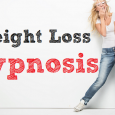What Swollen Blood Vessels In Your Legs Are A Symptom Of
Swollen blood vessels in the legs can indicate a host of underlying health problems. In some mild cases, this condition may be a cosmetic issue. However, in some serious instances, bulging veins may mean a serious problem. You should seek medical attention once your veins start to swell on your legs and is accompanied by other symptoms including chest pains, ulcers close to the veins and shortness of breath.
All these symptoms could be an indicator that you have a blood clot or peripheral vascular disease. If your swollen leg veins are a concern, you should get in touch with your doctor for a diagnosis and overview of your treatment options.
What causes swelling of veins in your legs?

Varicose veins
Varicose veins, as well as spider veins, are by far the most common cause of swollen veins. The varicose veins usually are blue or dark purple in colour and the swelling is usually distorted. While varicose veins can occur in any place on the body, they most often are found on the feet and legs. Additionally, with time, and when one sits or stands for prolonged periods of time, the swollen veins may become painful. The spider veins are usually milder than varicose veins – though they too can occur anywhere, even on the face.
Venous insufficiency
From biology, you know that every vein has several valves strategically placed along their length to help prevent blood from flowing backwards. If these valves do not work properly way, the valves weaken with time and blood starts to collect in the vein. This condition is known as venous insufficiency. This condition usually affects the deep-sitting veins in the leg though they can also affect superficial veins (those close to the skin’s surface).
Pregnancy
One of the biggest risk factors for the varicose vein condition is pregnancy. During pregnancy, the body experiences a lot of changes. Pressure inevitably builds up on the veins and makes it extremely difficult for blood to be carried back to the heart. And given the high amount of blood that needs transportation during pregnancy, the veins start to swell on the legs.
Old age
The walls of the veins are built with muscles that propel blood to the heart. With time and as one advances in age, the muscles of the walls become weak and lose their elasticity. Gradually, blood starts to pool in the veins and they bulge.
Smoking also causes these veins to lose their elasticity with time.

Thrombophlebitis
There are times when blood clots form in the veins. These clots can obstruct the flow of blood and lead to the swelling of the veins. Most of these clots occur in the veins located in the legs though they can also form in the neck and arm veins. This condition affects both superficial and deep sitting veins. If a blood clot in a deep vein manages to dislodge from the vein wall, it can be carried to major organs including the lungs. This will cause a condition known as pulmonary embolism which needless to say, is a deadly condition.
Treating woollen veins
There are numerous ways in which one can treat bulging veins. After one identifies the condition causing the swelling of the vein, a suitable treatment can be chosen.
Note that swollen veins that occur during pregnancy can go away on their own as the body recovers and relieves the pressure from the veins. You can expect the swelling to disappear in about three months or even a year after delivery.
Other swollen vein causes can be remedied with:

Changes in lifestyle
Leading a healthy lifestyle can help to reduce the severity of the swollen veins. Leading a healthy lifestyle means keeping a close eye on your weight, eating healthy, exercising regularly and avoiding long sitting and standing periods.
Compression stockings
These stockings are designed to help the muscles and the veins to move back to the heart with ease. They are constantly applying pressure to your legs. They can be bought from a pharmacy.
Laser surgery
This treatment includes the closing off of small varicose veins and spider veins using laser light. With time, the swelling reduces and ultimately disappears. No needles or incisions need to be made.
Vein stripping
In this procedure, the varicose veins are extracted through small cuts made on the skin. Blood flow remains uninterrupted as the blood proceeds on its journey back to the heart through other healthy veins.

Conclusion
If you notice swollen veins in your legs, be sure to seek medical attention. It could very well be an indication of a serious medical condition that needs immediate health concern.









